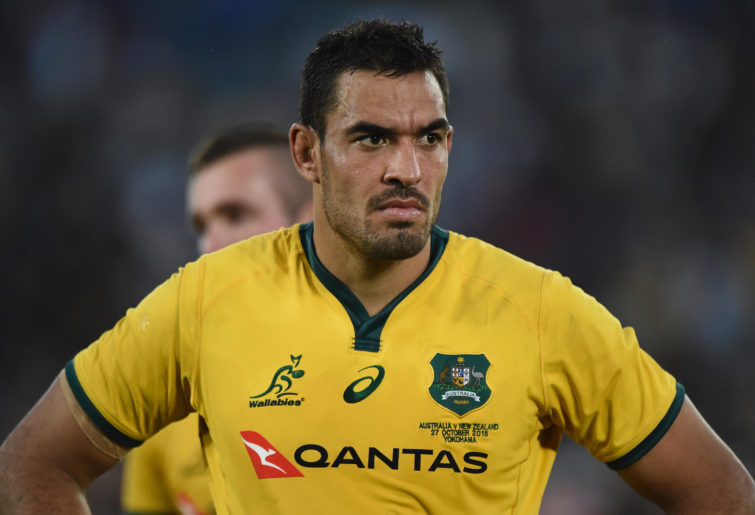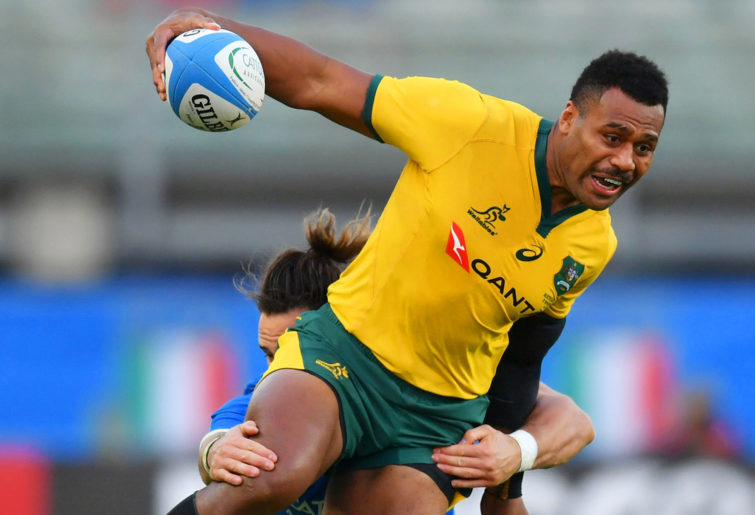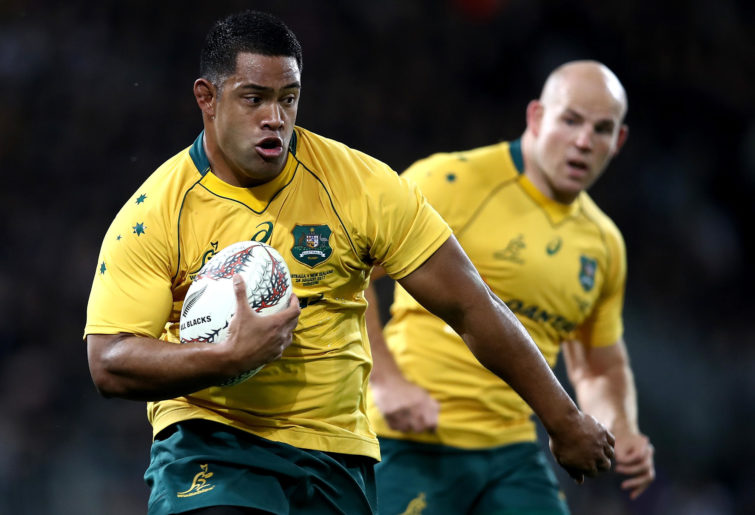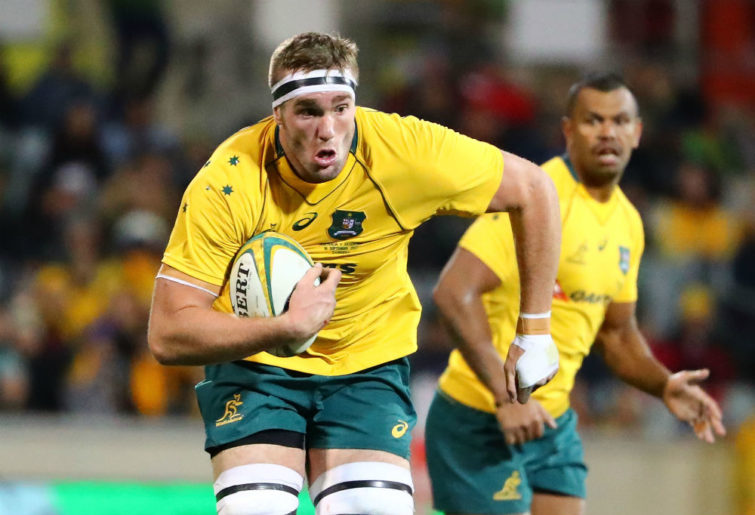The first Wallabies Rugby Championship team against the Springboks is due to be named.
A team should be chosen based on a complex interaction of the best players and how you want to play the game, taking into account the opposition and ground conditions.
Michael Cheika has simplified this process by selecting a single game plan and then selecting the players he thinks best suits that plan before finally selecting players to balance out significant weaknesses, but he seems to ignore the opposition and ground conditions in his selections and his game plan. This makes the Wallabies very predictable and easy to plan and coach against, as their declining Test wins per year shows.
Note that neither of these approaches would or should mean the best individual player in each position is chosen, because the game plan that is called for may require excellence in one specific skill and mere competence in the rest. The player most pundits consider the best in a given position may be deficient in that required skill.
Cheika’s game plan has as its main focus ball-in-hand attacking play using the 1-3-3-1 system. This requires mobility, fitness and playing fast from side to side. Thus players other than the tight five forwards are chosen for their attacking skills first. Other aspects, like defence, kicking, ruck breakdown and set pieces, take a lower priority.
Due to the 1-3-3-1 attacking system, with the ball in play more often and the ball being spread wide more often, a player’s reload time is very important. This is the time taken to be able to get back up and inject yourself back into play after being involved in a tackle.

(Matt Roberts/Getty Images)
Cheika’s game plan is a major reason the Wallabies are poor at kicking, exiting from their 22 and, most importantly, defence. Players are not chosen for those skills, nor are they practised. The set piece is used as a platform to attack via ball in hand. Thus the lineout is used with quite a few various plays coming from it with the exception of a maul to score tries from. Similarly the scrum is used to get quick ball out rather than force penalties.
Even creative playmaking in attack is sacrificed on the altar of running rugby. A flyhalf is chosen for quick distribution, darting runs and support play rather than the ability to create tries and the ability to mix up a varied game of passing, running and kicking.
Finally, the game plan is why the only two world-class Wallabies – David Pocock and Israel Folau – were not used properly. Pocock was shifted to No. 6 and No. 8 rather being at openside flanker, where he is the world’s best. Folau arguably should have been on the wing. His creative kicking and world-best aerial skills were used far less than they should have been; instead Folau was at fullback so he could run the ball back more often.
I offer an alternative.
If you look at the Australian Super Rugby teams, they are not endowed with pace. Nor are there many players with very good ball carrying skills or an ability to make clean breaks and break a lot of tackles. A notable exception is Samu Kerevi.
The set piece and forward play are strengths of the Brumbies and Reds. Additionally, there are a number of players who can kick the ball a long way.
This provides the ingredients to a traditional rugby game plan focused on set pieces and kicking for territory. Moreover, the focus should be on defence more than attack and harnessing the abilities of the few outstanding best players available.

(Dan Mullan/Getty Images)
Finally, I would utilise an attacking bench for impact in the last 20 minutes when an attacking focus would bring more rewards against some tired defenders.
Against the Springboks at altitude it is even more important to kick long and out where possible, thus slowing play down and minimising the impact of altitude.
The Springboks use a simple game plan against the Wallabies: they outmuscle the forwards, particularly at the breakdown and the advantage line, on both sides of the ball. They also have very fast players added to the back three from sevens rugby. After the forwards get over the gain line they go wide to fast wingers or kick high for contested kicks with quite a few chasers.
To counteract this the Wallabies need to select more powerful forwards and capable forwards at the breakdown over mobility and ball carrying. They also need to use a fast rush defence to prevent the forwards winding up or getting the ball wide, almost forcing them to kick either long or for contested kicks.
Thus the Wallabies back three should all be able to kick well and be good under the highball. The Wallabies would also focus on scoring from mauls from lineouts and forcing penalties from scrums.
I would retain the 1-3-3-1 attacking pattern since it is too late to learn the 2-4-2 pattern, which I would use from 2020 onwards. Reverting to older patterns of around the corner and so forth would not be successful against modern defences.

(Phil Walter/Getty Images)
The team I would select from the squad chosen with the addition of James O’Connor. The starting props are chosen for being the best at scrumming. The hooker is chosen for lineout throwing and his combination with the props.
- James Slipper
- Folau Fainga’a
- Allan Alaalatoa
Both locks have to be physical and competent at mauls both in attack and defence. One lock also has to be a proficient lineout caller. Both locks must be good at lineout catching and scrummaging. At least 1 lock must be good at lineout steals.
- Rory Arnold
- Izack Rodda
The back row must offer a balance of skills. The most important for a territory game is a strong lineout and, specifically against the Springboks, a breakdown presence and physicality. Finally, a strong rather than fast ball carrier who will gain metres against big forwards is required. All of those starting on the back row need a high work rate, with the bench providing more attacking power impact.

(Scott Barbour/Getty Images)
- Luke Jones, the best back row lineout exponent and excellent at stealing opposition ball.
- Liam Wright, the best jackal available with David Pocock out and also a good lineout option.
- Isi Naisarani, a very good ball carrying through heavy traffic and a high work rate, and he’s also a very good fifth lineout option
The back are chosen for being able to implement a good kicking game, defending well and finally for a varied playmaking game.
The halves need to be able to kick, pass, tackle and run the ball. They also need to have vision, game management and playmaking skills.
I would have the focus of playmaking from No. 9 and No. 10 and not No. 10 and No. 12. It suits a forward-orientated and territorial game and also suits the best players available. The No. 12 then can focus on playing as a dedicated No. 12 and not as a secondary playmaker. Where reasonable I would also look at the fullback for secondary playmaking skills, but that is of a lower consideration since the focus is on kicking and defence over attack.
- Nic White has the best kicking game of all the halfbacks and is also well rounded with no weaknesses and a strong flat pass both sides.
- Christian Lealiifano has a strong all-round game with no real weaknesses and a good varied kicking game and defender.
- Samu Kerevi, an outstanding attacking threat in Australian backs and also is good at passing and has an underrated short kicking game. He has a reasonable defence. His selection is the only one where attack was chosen over the overarching gameplan, because you do need at least one really outstanding attacking threat in the backs.
- Tevita Kuridrani is best outside centre and more importantly the best defender.
All of the back three must be able to kick and be good under the highball. Ideally all three should be good tacklers. One of the wingers needs to have significant pace.
- Tom Banks has genuine pace. He’s the only suspect defender, but he is willing and is improving in this area.
- James O’Connor would be a hybrid fullback winger. He would be given a roving commission to inject himself as a playmaker as needed. He is also a better goal kicker than Christian Lealiifano.
- Reece Hodge lacks pace for wing and can wind up from fullback and be an effective attacker. He’s the best of the three under the highball.
The bench is chosen for impact and against the Springboks. It’s a 6:2 forwards-orientated bench since this is the area that the Wallabies have a greater challenge from.
- Jordan Uelese
- Scott Sio provides more general play impact than James Slipper; however, Slipper is slightly more technically proficient in the scrum.
- Taniela Tupou is the most powerful prop in the squad.
- Lukhan Salakaia-Loto is a power lock replacement for Rory Arnold. Izack Rodda is an 80-minute player. Additionally, Lukhan can cover No. 6 if needed.
- Rob Valetini
- Michael Hooper
- Will Genia is an attacking half
- Kurtley Beale is a versatile attacking threat covering positions 10, 12, 11,14 and 15.
Centre would be cover by Hodge and O’Connor. Nos. 19, 20, and 21 are chosen not only for impact and power but because they provide a versatility not only due to injury but performance.
Both staring locks may play 80 minutes and all three on the back row could be replaced, as could Arnold. This would depend on who is performing, where the issues to be fixed are or where there are opportunities.
































































































